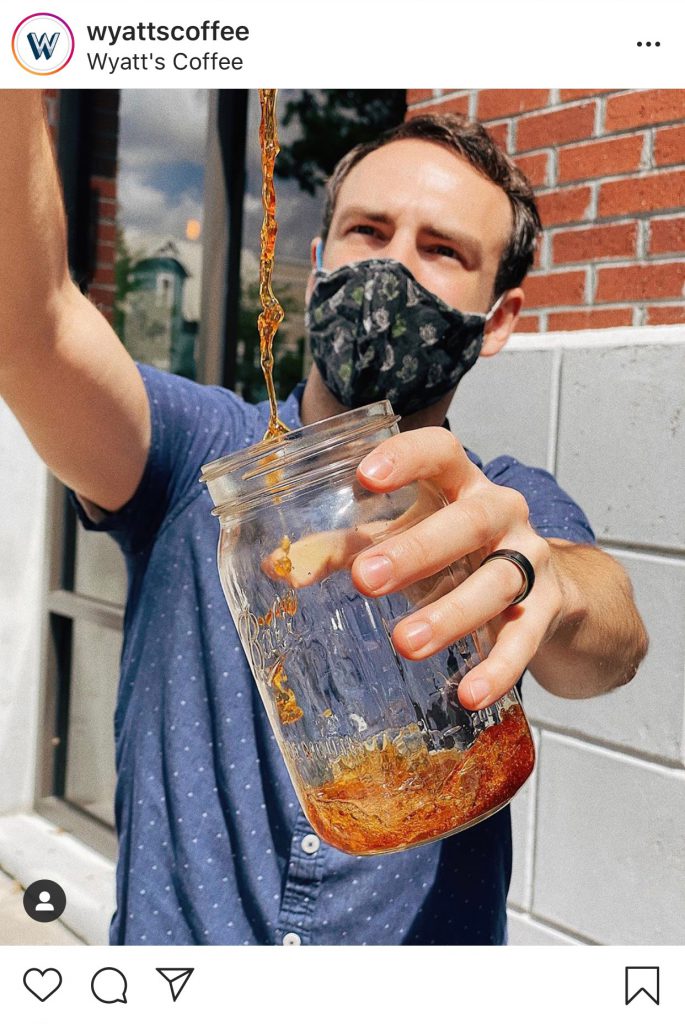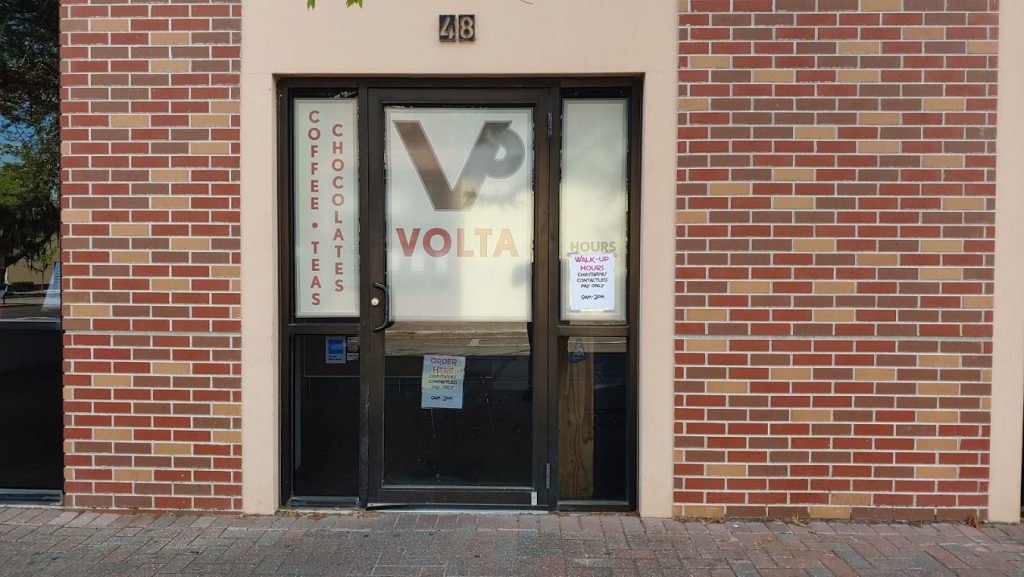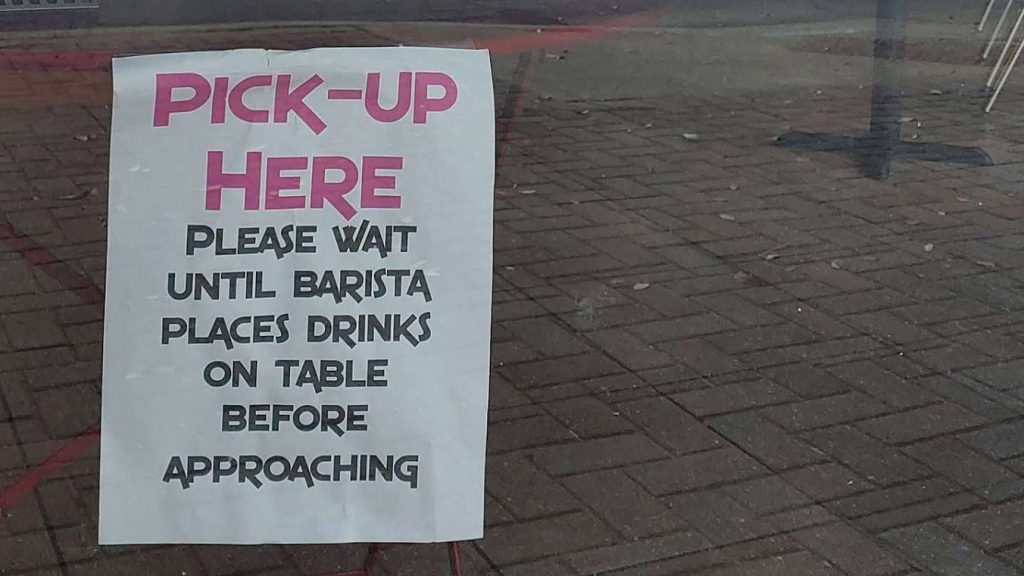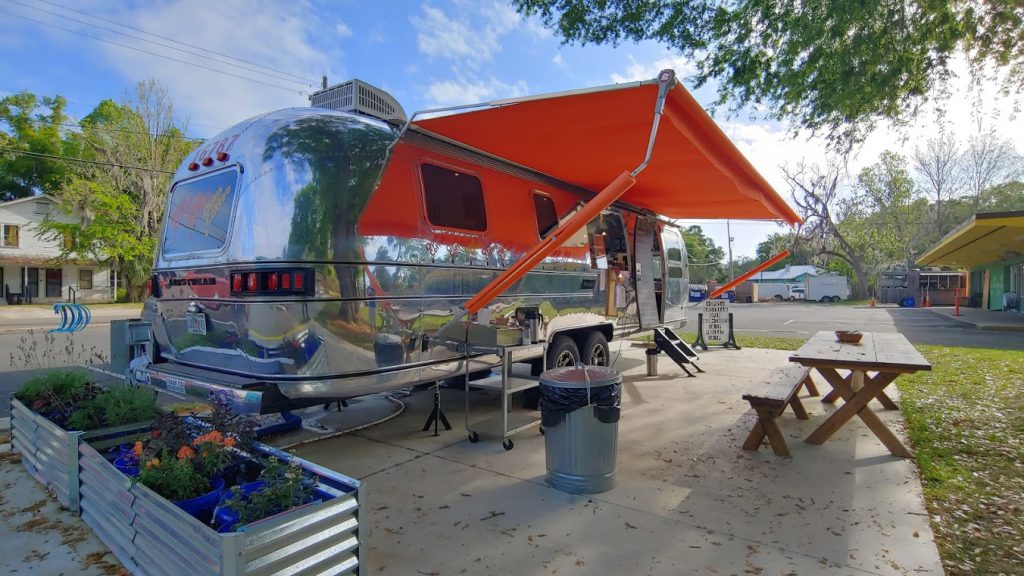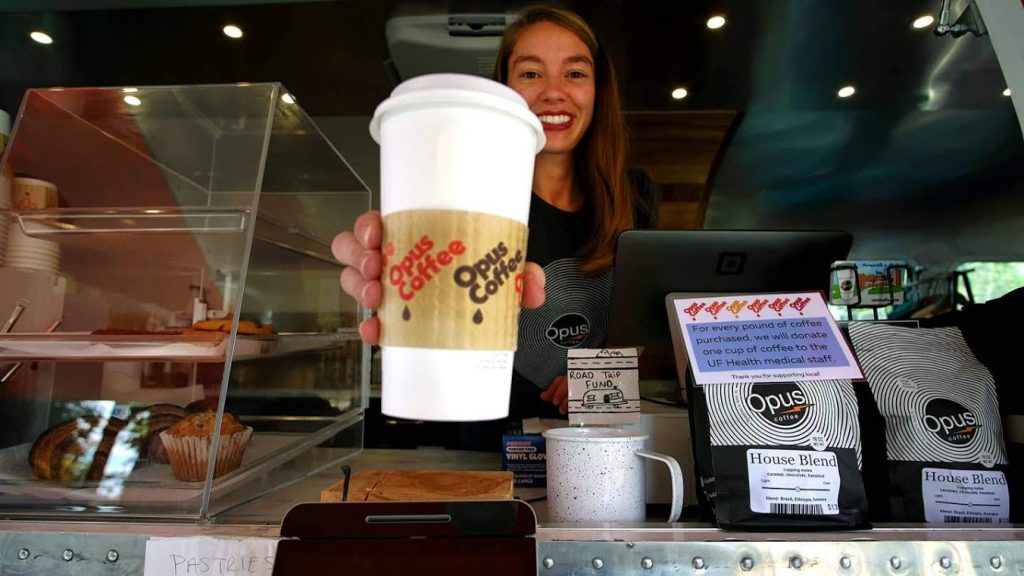Writer August Lah used to joke that she spent more than half her day in a coffee house.
But Lah, a second-year MFA student in the University of Florida’s creative writing program, wasn’t really joking. She would go to Volta Coffee, Tea & Chocolate in downtown Gainesville, find a table and set up her books and her papers, place her order, say hello to other regulars, chat with the barista then pick up her tray. Lah always arranged her tray the same way – the teapot, cup, timer and a little pitcher of milk just so. The routine settled her as she eased in to her writing.
“Part of what I miss about coffee houses is the ritual,” says Lah, now writing at home thanks to the pandemic.
That barista I see every day … if I don’t see that person, my day actually is a little less complete.”
Chris LeClere
Chris LeClere, a UF anthropology doctoral researcher, understands. LeClere studies coffee houses as political and cultural spaces, and he says coffee house patrons like Lah are in something akin to withdrawal, and it’s not all about the caffeine. Patrons are queueing up in the drive-through line at Starbucks and Coffee Culture, getting curb service at Wyatt’s and Karma Cream and stopping by the pickup table at Volta for a little taste of life as they once knew it.
“That barista I see every day . . . if I don’t see that person, my day actually is a little less complete,” LeClere says. “People are seeking a sense of normalcy; they see that cup of coffee as normalcy.”
LeClere was already deep into research on coffee houses as third places — not home, not work, but special and essential nevertheless – when quarantines started. His research took a turn – “this is research heaven for me” – as he began studying how the coffee house as third place could adapt to a pandemic.
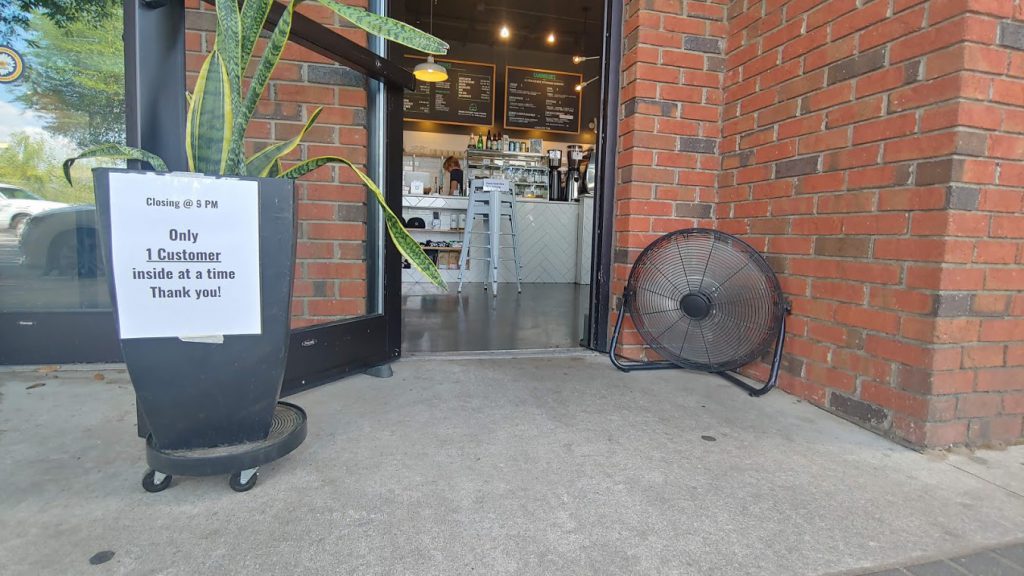
Connecting Virtually
Where he used to sit in coffee houses and watch the activity, today he observes virtually. Coffee houses realize consumers want to maintain a connection and are going online, using social media to maintain and even grow that connection. So far, LeClere has analyzed 326 Instagram posts from 20 coffee houses in 10 states.
For his part, LeClere is maintaining relationships by taking what he would have spent every day and giving virtual tips to a different barista each day. For example, he prefers Sweetwater organic coffee, an offering at Opus, so he’ll brew a cup at home, then click on @gnvbaristahelp and tip a barista at Opus.
“It’s important to me to maintain those ties with these people that I have a sort of parasocial relationship with,” LeClere says. “I want them to be back when this is over. I can’t go and see Vic at Karma Cream or Allie at Opus, but I still want to engage with them.”
LeClere says coffee houses’ first forays into social media focused on reassuring customers about health concerns and contamination. When it was clear the disruption might be existential, posts went from once or twice a week to three or four times a day.
“We’re wearing gloves, we’re wearing masks, use this app to get our coffee, here’s the delivery service we’re using,” LeClere says. “Coffee delivery didn’t used to be a thing. But it is now.”
Coffee itself is incredibly safe, LeClere says, because it’s roasted at more than 400 degrees Fahrenheit and brewed at 200 degrees Fahrenheit. Lately, coffee houses have been shifting from posting about health concerns to economic concerns, reminding customers that, Starbucks aside, they are small local businesses.
Remember the Baristas
On Facebook and Twitter, coffee houses are promoting new menu items and drinks and highlighting baristas. The posts getting the biggest likes are those that promote connection, LeClere says, like one from Subculture Coffee in Delray Beach: “remember this guy; he’s still here.”
Regulars like Lah are doing their part. Lah visits Volta for takeout, sometimes picking up cold brew concentrate so she can make an afternoon coffee drink – warmed up in a pan with milk and honey and cinnamon – and keep some sense of her routine and ritual at home. She’s on a first-name basis with the Volta baristas and misses them.
“It was a familiar space where I knew everybody,” Lah says. “There are a lot of regulars at Volta who I’ve never had a conversation with or maybe only talked to once or twice, but it was really great seeing them every day.
“And I’m an introvert. I like to be around people, but I don’t always want to have a big social interaction.”
It was a familiar space where I knew everybody. There are a lot of regulars at Volta who I’ve never had a conversation with or maybe only talked to once or twice, but it was really great seeing them every day.”
August Lah
Coffee houses who can maintain connections with regulars like Lah, even in nontraditional ways, are the ones that will be standing when social distancing eases, LeClere says. But even the social media pros will need logistical help to offset supply chain disruptions, he says, because coffee passes through 30 different hands before it ends up in your latte.
With the exception of Hawaii, coffee is not grown in the United States. Coffee becomes a local product, by USDA standards, when it is roasted, which changes its point of origin, and that “crafting” of coffee creates a locavore-style connection. Disruptions in getting coffee to roasters could result in smaller suppliers dumping coffee they cannot move down the supply chain.
Diversification may help some coffee shops, LeClere says. One coffee shop in Jacksonville began selling masks; with every mask purchase, offering a free cup of coffee. The promotion attracted hordes of health care workers who need masks, and there is now a waiting list. In Gainesville, Opus, which has a contract with UF Health, is giving free coffee to health care workers for every pound of beans purchased.
Coffee Connoisseur
LeClere’s history with coffee started young at Regency Square Mall in Jacksonville. At 11, he saw the film “Hudson Hawk,” in which Bruce Willis gets out of jail and makes a beeline for a coffee house to satisfy a cappuccino craving. Each much-anticipated cup, however, is interrupted by a plot twist, until the end, when he finally gets the cappuccino, fade to big swig. The young LeClere walked out of the movie and across the mall to Barnie’s Coffee & Tea, which listed a cappuccino at $3.
“I had $3, so I thought I’d see what it was all about,” LeClere says. “I fell in love.”
During an 18-year career in broadcast television prior to academic life, he drank four or five cups a day and still does, although his record – about 50 cups in one day – taught him about caffeine intoxication. He knew better than to drink newsroom swill and became known as the guy with the gourmet coffee. When he settled on studying coffee and coffee houses, he knew he would need more expertise than his prodigious consumption, and he shelled out almost $1,000 to get a level two barista certification, which entails weeks of classes.
“It would be disingenuous for me to study coffee houses if I don’t understand what they’ve gone through,” LeClere says. In Gainesville, he says there’s a misconception that most baristas are students. They’re not, and many have degrees to go with their certification and training. For many, it’s a career.
“Coffee is the most chemically complex beverage we consume, more so than wine,” LeClere says. “We like the experience of having someone else make it for us.”
His grandmother stopped teasing him about spending time in coffee houses when Starbucks used his data from two studies. The first on who buys pumpkin spice lattes (“white dudes like me”), and the second on how patrons use Starbucks’ space. Starbucks, he says, wants to be your living room.
Rituals Interrupted
Now, we are all stuck in our living rooms – or guest rooms, bedrooms, at our dining room tables – craving our nook in a coffee house.
“I used to say that I couldn’t get work done at home, and I really felt that way at the time,” says Lah, who is just starting work on her novel, writing much of her early drafts in longhand on paper. “Now that it’s a necessity, I’ve been able to adapt.”
Coffee, LeClere says, is both a beverage of modernity and a beverage of nostalgia. We grab a cup as we go on our busy way, the memories that go along with the cups adding up over the years. Lah understands that push pull between the past and the future as she looks forward to getting back “a little piece of my community.” The return to Volta, her own third place, won’t be strange exactly, “but I feel like everything’s going to feel very new and very nostalgic at the same time.”
That’s natural, LeClere says. Nostalgia, especially for a third place so many hold dear, is not about the past, but the future.
“Nostalgia is about an imagined past we want to base the future on,” LeClere says. “We sit around, we have coffee. We’re connecting. We’re going back to where we were.”
Source:
Chris LeClere, UF Anthropology doctoral researcher

Revolution in the Coffee House
Third places are community gathering spots that promote social connections and sometimes foment rebellion. They can be libraries, parks, community centers and an assortment of other places, but the coffee house holds a special place in history, LeClere says.
Coffee houses became popular as third places in Europe in the late 1600s in places like London, Paris and Vienna and were pay-to-play spaces often called penny universities. For a penny, you could get a cup of coffee and spend the day talking or debating. In the Middle East, coffee houses were shut down in the 1480s to quash rebellion.
Historically, coffee was political, and coffee houses were political spaces.
“Coffee houses became popular when we put down the bottle [alcohol] and picked up the coffee cup, and that’s when revolution started happening in Europe,” LeClere says. “Coffee houses were shut down in France during the revolution and in Britain during the civil war.”
Americans drink coffee instead of tea as an act of defiance against the British, who wanted the colonists to drink tea. Historical documents, however, indicate that the act of defiance came with a cost, LeClere says. “There are source documents where our founding fathers talk about how coffee tastes disgusting,” LeClere says. “Good-tasting coffee is a very new thing.”


